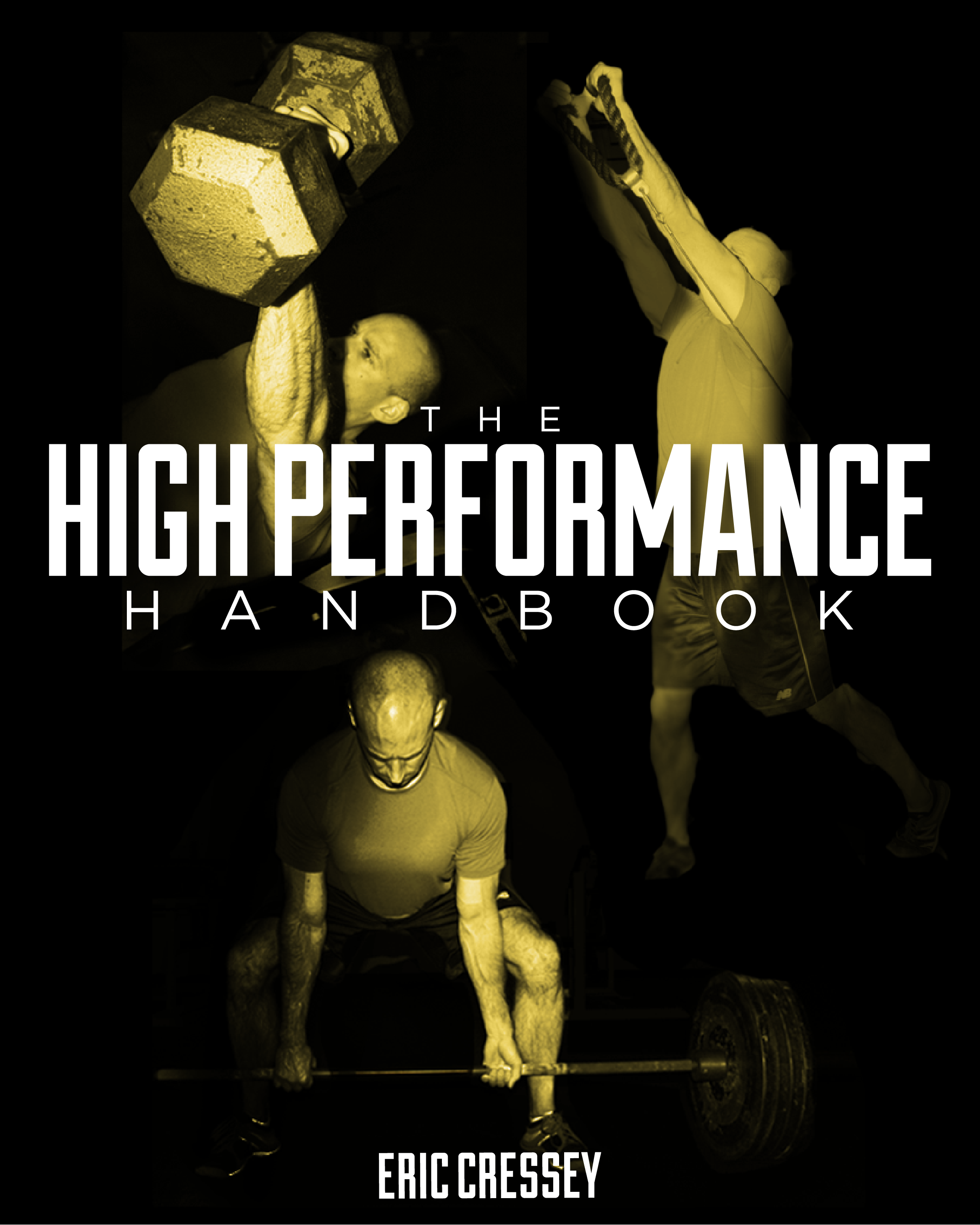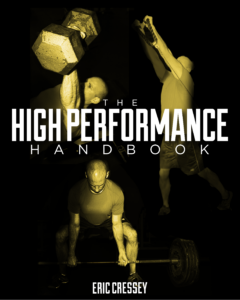
12 Ways to Know if You Should Include an Exercise in a Strength Training Program
At Cressey Sports Performance, whenever we’re training a new staff member to write strength and conditioning programs, I always heavily emphasize the following point:
“Want to put an exercise in a program? You must be able to quickly and easily justify its inclusion.”
Without a doubt, exercise selection is one of the most important programming variables one must take into account. To that end, there are many ways that one can determine whether an exercise belongs in a strength training program (or not) – and each justification begins with a question. Here are 12 questions to get the ball rolling:
1. Can it be sufficiently loaded, or does it allow you to achieve a training effect with less loading?
If one is looking to purely gain muscle mass, then a side bridge row probably isn’t a great choice, as it doesn’t give rise to athletes using significant loading:
Conversely, if someone has a cranky forearm and needs to find a way to maintain an upper body training effect with less gripping demands, the side bridge row can be a great option.
2. Does it offer functional carryover to an individual’s life or athletic endeavor?
A deadlift is easy to sell on this front. It trains individuals to have a strong hip hinge that they’ll use regardless of whether they’re picking a child up off the ground, or jumping to grab a rebound. Conversely, juggling dumbbells while standing on one leg on an unstable surface isn’t going to provide you with much (if any) real-world carryover. Don’t waste valuable training time on unproductive exercises.
3. Does the individual have the capacity to perform the movement?
This question applies to both the osteokinematics (gross movements – flexion, extension, etc. – of bones at joints) and arthrokinematics (subtle movements – rolling, rocking, gliding, etc. – of bones at joint surfaces). As examples:
a. An individual with femoroacetabular impingement (a bony block) at the hip may not be able to get into a deep squat position. This would be a limitation on the osteokinematic front (limited hip flexion and, likely, internal rotation).
b. An individual with poor rotator cuff control might not be able to limit the anterior gliding of the humeral head during an external rotation toss to wall. This would be a limitation on the arthrokinematic front (even if the drill might look good to the naked eye).
4. Will an individual have sufficient equipment to perform it?
I always get a kick out of looking at canned, mass marketed programs that include things like the safety squat bar, chains, and sleds. Most commercial gyms don’t have these things; heck, a lot of gyms don’t even have kettlebells or medicine balls. Learning about equipment access up-front if you’re writing a program for someone who isn’t in “your gym” is an important step to save time and hassle.
As an interesting aside, I’ve had a lot of positive feedback on the “exercise modifications” section of The High Performance Handbook. Basically, this helps individuals modify the program to work with their equipment limitations. Versatility is very important to gym-goers!
5. Does it allow for sufficient time under tension to yield hypertrophy (muscle building) benefits?
If you want to put muscle mass on someone, you need to have some time under tension. For that reason, an exercise like a rotational row would be an inferior hypertrophy training option, even if it is great for training power in an athletic population.
6. Does it take a lot of set-up?
If the individual performing the program is crunched for time, exercises that take considerable set-up time are generally better left out of the program.
7. Does it fit in with where an individual stands in a regression-progression continuum?
If someone can’t even squat to parallel with body weight without major compensations, then programming a back squat probably isn’t a good idea.
Conversely, if someone is an elite Olympic lifter with an excellent squat – both in terms of patterning and loading – then telling them to do three sets of eight goblet squats probably won’t offer much benefit.
8. Will it provide a training effect without creating significant soreness?
Sometimes, we want to avoid creating soreness. A perfect example is in-season programming for athletes, where we might avoid drills with a significant eccentric component, instead programming things like step-ups, deadlifts from the floor, and sled pushing/dragging. At other points in the year, it might be fine to have post-exercise soreness, so our exercise pool expands significantly.
9. Does it build “good stiffness” or reduce “bad stiffness?”
As we know, quality movement is a balance of mobility and stability. You need range of motion, but stability within that range of motion. Likewise, you need some rigidity, but not so much as to not allow for fluid movements. Every exercise should help you to find that “balance” in some way. For instance, look at the reverse crunch, which builds “good” stiffness in the anterior core (particularly external obliques) while reducing stiffness in the lats and lumbar erectors.
10. Will it allow an individual to train around an injury?
I’ll admit: there are some exercises that I almost never use unless when we have an athlete who is on crutches, in a sling, or dealing with some other type of injury. When someone is hurt and wants to maintain a training effect without exacerbating an injury, you have to get creative.
11. Can it be used to train power?
Squats, deadlifts, bench presses, and overhead presses are all exercises that can be utilized to train power. Conversely, good luck trying to turn a chin-up into a power training exercise without blowing out a shoulder or elbow. An overhead medicine ball stomp would be a much better option for challenging high velocity shoulder extension.
12. Does an individual love or hate it?
Some people love certain exercises because they’re good at performing them. In most cases, to make long-term progress, they need to emotionally separate themselves from those exercises a bit so that they can devote extra effort and training volume to bring up their weaknesses.
Conversely, in beginners who aren’t completely “sold” on lifting weights, it’s okay to use a favorite exercise to help deliver a message. I can’t tell you how many women we’ve had over the years who love to trap bar or sumo deadlift in their initial months of training – and they actually request it in their new programs. If seeing a particular exercise in a program gets a new client fired up to put in extra effort and stay adherent, I’m all for meeting them halfway by including it.
Wrap-up
This is certainly not an exhaustive list of considerations one must take into account on the exercise selection front, but it’s a good place to start. In the comments section below, I’d love to hear your thoughts on other things you take into account.




